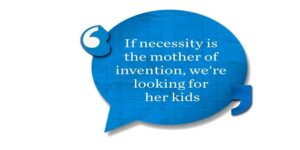
Want to Thrive as a Solopreneur? Develop These Habits
Although I have a full-time job, recently I’ve started to identify with solopreneurs. Why? Well, for eight years, I’ve also been spearheading an annual Children’s

Although I have a full-time job, recently I’ve started to identify with solopreneurs. Why? Well, for eight years, I’ve also been spearheading an annual Children’s

People often hate the idea of networking, either because they’re introverts by nature, they’re afraid of rejection, or they don’t want to seem pushy, self-absorbed,

As a Business and Leadership Coach for women, I spend plenty of time enforcing good networking habits. A common problem I see is that too
How many networking events do you participate in monthly? One? More than five? Do you loathe and avoid networking events? Or do you love meeting
In the world of Human Resources, professional development, networking and relationship-building are not just nice-to-have; they are must-haves. Luckily, conference attendance is a solid way
While technology has expanded the ways and means through which HR professionals can continue their education, the most rewarding and valuable professional development experiences always
In the world of Human Resources, professional development, networking and relationship-building are not just nice-to-have; they are must-haves. Luckily, conference attendance is a solid way
Building something new always demands a moment of pause. So, we did just that. We paused and posed a much needed question: If you could
The idea of “networking” can often make people freeze up. How do I do it? Where do I start? And small talk is difficult! What
By the time she met with me, her discomfort and exhaustion were evident. She was vulnerable and it showed: her tired eyes avoided direct contact
The balance of power is shifting in the employer/employee relationship. What does it mean for the future of work? The #TChat crowd weighs in
“I believe that close association with one who refuses to compromise with circumstances he or she does not like is an asset that can never
Summer’s here and you’re probably getting ready to hit the beach or soak up some sun on a patio. Fair enough. But don’t let your

The TalentCulture #TChat Show is back live on Wednesday, June 11, 2014. #TChat Radio starts at 6:30 pm ET (3:30 pm PT) and the convo continues on #TChat Twitter chat from

The social era is creating a whole new level of opportunity for business and personal brands. Are you making the most of it?

What does it take to meet top tech talent on today’s terms? Kevin Grossman weighs in after Dice exchanges insights with the #TChat crowd

Does professional networking feel like a burden? Lighten the load by planning ahead for these 5 key social scenarios

Looking back at the best of #TChat — with gratitude for everyone who brings the TalentCulture community to life

TalentCulture is thrilled to be featured on Forbes List of “Best Websites For Your Career.” Why? In the spirit of lists everywhere, here are 3 reasons…
Social media has made our lives open books. But what are the implications for how we manage our individual “brands”? The TalentCulture community shared opinions and ideas…
This week #TChat has star power! We get real about employee and employer brands with the creator of reality TV show “Top Recruiter”…
Online endorsements can carry a lot of weight. But LinkedIn’s recent “endorsements” feature has the #TChat crowd asking: “What is the point of diminishing returns?” Let’s discuss!
How can you stay ahead of the curve in today’s job environment? After a week of TalentCulture community discussion, I’m reminded that the key is not how fast or how elegantly your career moves forward – it’s how many others you bring along for the ride.
On the 2-year anniversary of TalentCulture’s #TChat weekly Twitter Chat events, we looked back at the meaning of social and collaborative learning, and considered the road ahead….
Birds aren’t known to be mental giants. After all, does anyone really want to be called a “bird brain?” Yet, when it comes to communities, perhaps one of the smartest things you can do is to think like a bird. Here’s why…